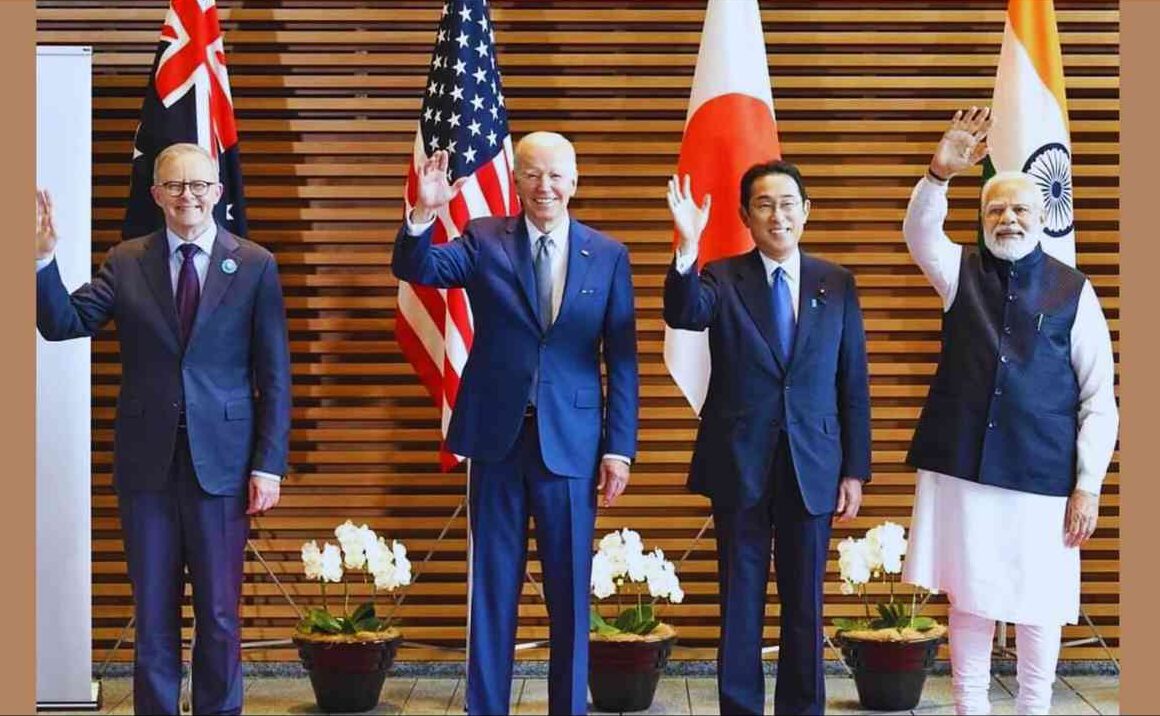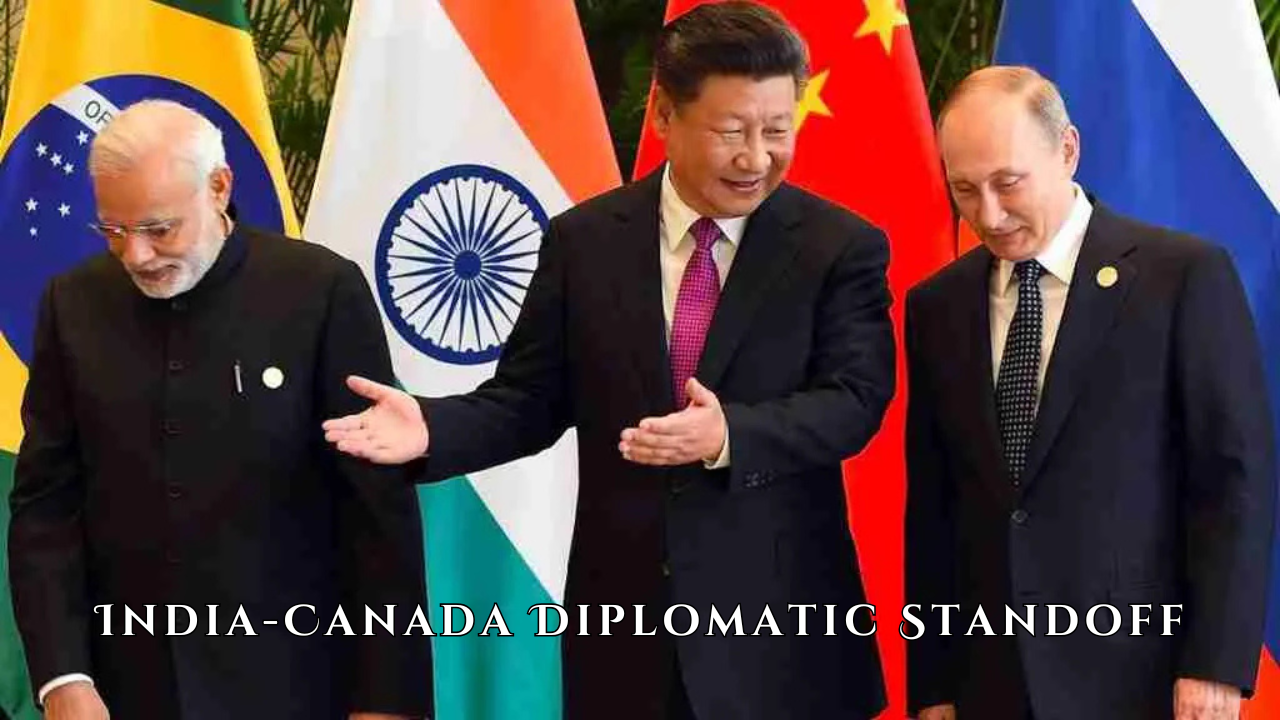India’s Strategic Dilemma
This critical analysis makes an appraisal of M. K. Narayan’s view in the article “China, India, and New Delhi’s Quad Dilemma” in The Hindu (October 14, 2024) that India must balance its Quad involvement for security benefits while maintaining stable relations with China, asserting strategic autonomy, and managing alliances to avoid provoking its powerful neighbour.
India’s growing influence in global geopolitics has placed it in the middle of a challenging strategic balancing act. On one hand, India’s participation in the Quadrilateral Security Dialogue (Quad) involving Australia, Japan, the United States, and itself, offers a vital opportunity to counterbalance China’s increasing power in the Indo-Pacific. On the other hand, India’s geographic and economic ties with China make it crucial to avoid overtly provoking its neighbour. This appraisal zeroes in on India’s careful balancing of Quad involvement and relations with China, asserting strategic autonomy to enhance security and diplomacy while avoiding conflict and safeguarding national interests.

India’s Engagement with the Quad
The Quad emerged as a significant geopolitical alliance with shared interests in promoting security, economic growth, and stability in the Indo-Pacific. India’s involvement in the Quad reflects its interest in working with other like-minded democracies to ensure freedom of navigation, regional security, and cooperation in areas like technology and infrastructure. As noted in several criticisms, India’s participation in the Quad is not a reactive measure but a proactive strategy to shape the regional security architecture and assert its influence in a rapidly changing world.
The Quad also provides India with access to military technologies, joint defence exercises, and diplomatic leverage. It helps India diversify its security partnerships and reduce its over-reliance on any one country for defence support. The Quad’s cooperative efforts in areas like supply chain resilience and cybersecurity also align with India’s growing emphasis on technological self-reliance.
However, the Quad’s perceived objective of containing China complicates India’s foreign policy, especially given India’s ongoing border tensions with China along the Line of Actual Control (LAC). Despite these tensions, economic interdependence remains significant between the two countries, and India must be cautious not to destabilise relations to the point where it threatens its own security and economic growth.
India’s Complex Relationship with China
India and China share a long and complex history, marked by both cooperation and conflict. The current state of relations is particularly fraught, with tensions along their disputed Himalayan border simmering since the 2020 Galwan Valley clashes. China’s increasing military build-up, assertiveness, and territorial ambitions pose real concerns for India’s security.
Despite this, China’s view of India as a secondary threat compared to issues like Taiwan and the South China Sea provides India with some diplomatic space. As critics have pointed out, China likely sees its border disputes with India as less significant compared to its core territorial interests in East Asia. India can potentially use this distinction to manage its diplomatic relations with China while continuing to strengthen its alliances through the Quad.
Nevertheless, India must proceed cautiously. As observed in various criticisms, overemphasising China’s sensitivities might constrain India’s strategic autonomy and make it appear too passive. India’s policymakers must ensure that while they consider China’s responses, they do not adopt an overly submissive posture that could limit India’s ability to assert its national interests.
Strategic Benefits of the Quad for India
Critics argue that some analyses of India’s role in the Quad fail to fully appreciate the strategic benefits of the alliance. India’s engagement with the Quad offers several significant advantages, including a shared commitment to preserving a rules-based order in the Indo-Pacific. This partnership allows India to contribute to and benefit from initiatives aimed at regional security, such as maritime patrols and joint military exercises. Such cooperation strengthens India’s military readiness, particularly in the maritime domain, where China has been increasingly assertive.
Moreover, India’s participation in the Quad strengthens its diplomatic clout by aligning it with other leading democracies. This helps India present itself as a key player in the region, capable of contributing to global security without being entirely aligned with the West. The Quad also opens doors for collaboration in critical areas like clean energy, climate change, and infrastructure development, all of which are important for India’s long-term growth.
Some analyses underestimate the Quad’s significance in India’s broader strategic vision by downplaying its advantages. India’s involvement in the Quad goes beyond countering China; it aims to create a balanced regional order that benefits all participating nations.
Managing the China Factor: A Delicate Balancing Act
One of the most critical challenges India faces is managing its relationship with China while strengthening its ties within the Quad. China sees the Quad as part of a U.S.-led effort to contain its rise and encircle it militarily. India’s growing involvement in this grouping could add to tensions with China, leading to increased military posturing along their shared borders or retaliatory economic measures from Beijing.
As critics have pointed out, focusing too much on China’s sensitivities risks undermining India’s strategic goals. India must be careful not to allow its fear of antagonising China to dictate its foreign policy. At the same time, it is equally important for India to communicate clearly to China that its engagement with the Quad is not intended to be a direct challenge but rather a way to ensure stability and peace in the region.
This requires India to engage in nuanced diplomacy, managing both its alliance with the Quad and its bilateral relationship with China. India has demonstrated the ability to navigate complex relationships in the past, maintaining strong ties with Russia even while cooperating closely with Western powers. This diplomatic finesse will be crucial as India manages the Quad-China balancing act.
Domestic and Economic Considerations
Another crucial factor shaping India’s foreign policy is domestic politics. India’s government under Prime Minister Narendra Modi has been keen to project India as a leading global power. The Quad offers a platform for India to showcase its diplomatic influence and its role in shaping global security. Besides, Modi’s administration has prioritised strengthening defence ties with the U.S. and other Quad members, as this aligns with its vision of a more self-reliant and assertive India.
Economic factors also play a vital role. Trade between India and China remains robust, despite their political differences. Some critics argue that earlier analyses have underplayed the importance of these economic ties and the need to integrate economic considerations into India’s broader strategic calculations. While India has taken steps to reduce its reliance on Chinese imports, economic cooperation remains essential for sectors like manufacturing, telecommunications, and infrastructure.
The Quad provides India with opportunities for economic diversification, particularly in high-tech sectors and supply chain resilience. This can help India reduce its dependence on Chinese goods and services over time, further strengthening its strategic autonomy.
Alternative Multilateral Arrangements
In addition to the Quad, India is also involved in several other multilateral forums, such as BRICS (Brazil, Russia, India, China, South Africa) and the Shanghai Cooperation Organisation (SCO). These platforms offer India alternative avenues for engaging with China and other regional powers. Critics point out that India’s participation in these forums is often overlooked in discussions of its strategic options.
While the Quad is an important element of India’s foreign policy, India must also continue to engage in other multilateral settings that provide it with diplomatic flexibility. This helps India avoid becoming overly reliant on any one alliance or being seen as too aligned with Western powers against China.
Conclusion
India’s strategic dilemma in balancing its engagement with the Quad and its relationship with China reflects the complex realities of contemporary global politics. India stands at a crossroads, where it must assert its strategic autonomy, strengthen its security partnerships, and continue to manage its relationship with China in a way that avoids conflict while promoting its national interests.
While the Quad offers significant benefits in terms of security, diplomacy, and economic collaboration, India must be mindful not to escalate tensions with China unnecessarily. At the same time, India should not allow fear of antagonising China to limit its ability to pursue its long-term goals. By maintaining a balanced and flexible foreign policy, India can continue to enhance its role as a key player in the Indo-Pacific while managing the risks posed by its powerful neighbour.
This requires a careful balancing act, but India has the diplomatic, economic, and military tools to navigate these challenges effectively. By proactively shaping the regional security environment and leveraging its partnerships, India can ensure that its strategic interests are protected without compromising its sovereignty or stability.
Subscribe to our Youtube Channel for more Valuable Content – TheStudyias
Download the App to Subscribe to our Courses – Thestudyias
The Source’s Authority and Ownership of the Article is Claimed By THE STUDY IAS BY MANIKANT SINGH

Leave a Reply